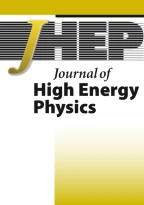Abstract
PandaX-4T is a ton-scale dark matter direct detection experiment using a dual-phase TPC technique at the China Jinping Underground Laboratory. Various ultra-low background technologies have been developed and applied to material screening for PandaX-4T, including HPGe gamma spectroscopy, ICP-MS, NAA, radon emanation measurement system, krypton assay station, and alpha detection system. Low background materials were selected to assemble the detector. Surface treatment procedures were investigated to further suppress radioactive background. Combining measured results and Monte Carlo simulation, the total material background rates of PandaX-4T in the energy region of 1–25 keVee are estimated to be (9.9 ± 1.9) × 10−3 mDRU for electron recoil and (2.8 ± 0.6) × 10−4 mDRU for nuclear recoil. In addition, natKr in the detector is estimated to be < 8 ppt.
Article PDF
Similar content being viewed by others
Avoid common mistakes on your manuscript.
References
G. Bertone, D. Hooper and J. Silk, Particle dark matter: Evidence, candidates and constraints, Phys. Rept. 405 (2005) 279 [hep-ph/0404175] [INSPIRE].
P. Juyal, K.-L. Giboni, X.-D. Ji and J.-L. Liu, On proportional scintillation in very large liquid xenon detectors, Nucl. Sci. Tech. 31 (2020) 93 [arXiv:1910.13160] [INSPIRE].
K.L. Giboni, P. Juyal, E. Aprile, Y. Zhang and J. Naganoma, A LN2-based cooling system for a next-generation liquid xenon dark matter detector, Nucl. Sci. Tech. 31 (2020) 76 [arXiv:1909.09698] [INSPIRE].
Z. Li et al., Event vertex and time reconstruction in large-volume liquid scintillator detectors, Nucl. Sci. Tech. 32 (2021) 49 [arXiv:2101.08901] [INSPIRE].
L. Zhao and J. Liu, Experimental search for dark matter in China, Front. Phys. (Beijing) 15 (2020) 44301 [arXiv:2004.04547] [INSPIRE].
J. Liu, X. Chen and X. Ji, Current status of direct dark matter detection, Nature Phys. 13 (2017) 212.
PandaX-II collaboration, Results of dark matter search using the full PandaX-II exposure, Chin. Phys. C 44 (2020) 125001 [arXiv:2007.15469] [INSPIRE].
PandaX-4T collaboration, Dark Matter Search Results from the PandaX-4T Commissioning Run, Phys. Rev. Lett. 127 (2021) 261802 [arXiv:2107.13438] [INSPIRE].
PandaX collaboration, Dark matter direct search sensitivity of the PandaX-4T experiment, Sci. China Phys. Mech. Astron. 62 (2019) 31011 [arXiv:1806.02229] [INSPIRE].
L. Zhao et al., The cryogenics and xenon handling system for the PandaX-4T experiment, 2021 JINST 16 T06007 [arXiv:2012.10583] [INSPIRE].
T. Zhang et al., Low Background Stainless Steel for the Pressure Vessel in the PandaX-II Dark Matter Experiment, 2016 JINST 11 T09004 [arXiv:1609.07515] [INSPIRE].
T. Marrodán Undagoitia and L. Rauch, Dark matter direct-detection experiments, J. Phys. G 43 (2016) 013001 [arXiv:1509.08767] [INSPIRE].
JNE collaboration, Muon flux measurement at China Jinping Underground Laboratory, Chin. Phys. C 45 (2021) 025001 [arXiv:2007.15925] [INSPIRE].
D.S. Akerib et al., The LUX-ZEPLIN (LZ) radioactivity and cleanliness control programs, Eur. Phys. J. C 80 (2020) 1044.
E. Aprile et al., Material radioassay and selection for the XENON1T dark matter experiment, Eur. Phys. J. C 77 (2017) 890.
H. Arahmane, E.-M. Hamzaoui, Y. Ben Maissa and R. Cherkaoui El Moursli, Neutron-gamma discrimination method based on blind source separation and machine learning, Nucl. Sci. Tech. 32 (2021) 18.
X. Wang et al., Material Screening with HPGe Counting Station for PandaX Experiment, 2016 JINST 11 T12002 [arXiv:1608.08345] [INSPIRE].
Y.-L. Yan et al., Study on cosmogenic radioactive production in germanium as a background for future rare event search experiments, Nucl. Sci. Tech. 31 (2020) 55 [INSPIRE].
GEANT4 collaboration, GEANT4 — A simulation toolkit, Nucl. Instrum. Meth. A 506 (2003) 250 [INSPIRE].
Y. Yuan and S. Wang, Determination of thorium and uranium in copper using inductively coupled plasma mass spectrometry, Nucl. Tech. 41 (2018) 90301.
M. Fu et al., Investigation of radioactive radon daughters removal methods from copper surface, Nucl. Tech. 44 (2021) 20502.
M. Fu, Materials assaying and radioactive background simulation for the PandaX-4T experiment (in Chinese), MSc Thesis, Peking University, China (2021).
S. Li et al., Krypton and radon background in the PandaX-I dark matter experiment, 2017 JINST 12 T02002 [arXiv:1701.07307] [INSPIRE].
E.H. Miller et al., Constraining Radon Backgrounds in LZ, AIP Conf. Proc. 1921 (2018) 050003 [arXiv:1708.08533] [INSPIRE].
X. Cui et al., Design and commissioning of the PandaX-4T cryogenic distillation system for krypton and radon removal, 2021 JINST 16 P07046 [arXiv:2012.02436] [INSPIRE].
JUNO collaboration, Radioactivity control strategy for the JUNO detector, JHEP 11 (2021) 102 [arXiv:2107.03669] [INSPIRE].
X. Chen et al., BambooMC — A Geant4-based simulation program for the PandaX experiments, 2021 JINST 16 T09004 [arXiv:2107.05935] [INSPIRE].
Author information
Authors and Affiliations
Consortia
Corresponding authors
Additional information
Publisher’s Note
Springer Nature remains neutral with regard to jurisdictional claims in published maps and institutional affiliations.
ArXiv ePrint: 2112.02892
Rights and permissions
Open Access . This article is distributed under the terms of the Creative Commons Attribution License (CC-BY 4.0), which permits any use, distribution and reproduction in any medium, provided the original author(s) and source are credited.
About this article
Cite this article
The PandaX-4T collaboration., Qian, Z., Si, L. et al. Low radioactive material screening and background control for the PandaX-4T experiment. J. High Energ. Phys. 2022, 147 (2022). https://doi.org/10.1007/JHEP06(2022)147
Received:
Revised:
Accepted:
Published:
DOI: https://doi.org/10.1007/JHEP06(2022)147
